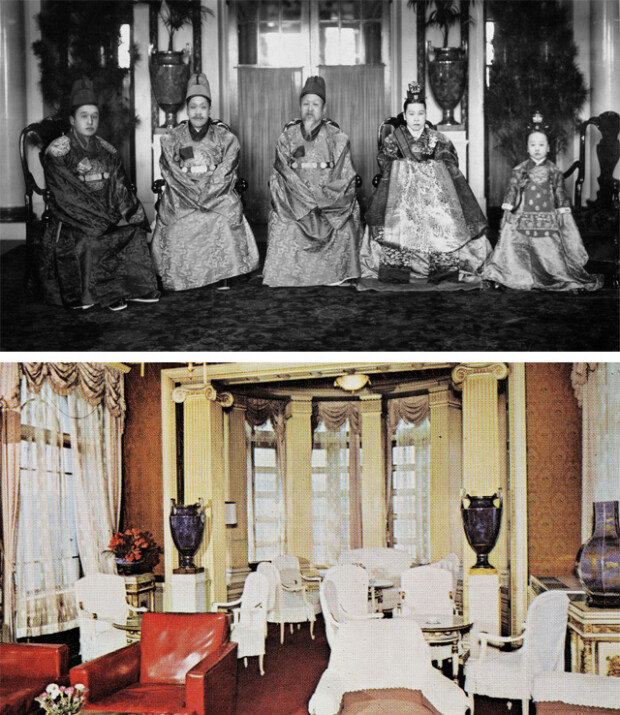How did Gojong’s ceramic end up in Japanese hotel?
How did Gojong’s ceramic end up in Japanese hotel?
Posted July. 29, 2020 07:39,
Updated July. 29, 2020 07:39

Then-French statesman Marie François Sadi Carnot gave a set of two ceramics to King Gojong of Joseon in 1886 after establishing diplomatic relations with the country. They are a polychrome-decorated white Salamis vase and a Clodion vase made by the Manufacture Nationale de Sèvres. The Salamis vase is currently owned by the National Palace Museum of Korea while the Clodion vase was thought to be missing. However, it was recently discovered in a restaurant in Prince Hotel in Tokyo, Japan. How did Gojong’s ceramic end up in Japan?
The Clodion vase exudes delicate beauty with its deep and mysterious cobalt blue color and brush strokes reminiscent of heat haze. As most metallic oxides break up at 1,000 degrees Celsius, creating such a color requires top-notch technology. The color of the Clodion vase is so unique that it is often called the “Sèvres blue.” The vase also features gold-covered edges around its handle and exterior surface.
A curation team at the National Palace Museum of Korea tracked the location of the Clodion vase based on pictures while preparing its “New Royal Ceramics” exhibition to showcase the Western-style ceramics used by the Joseon Dynasty. The vase was identified in a picture of the royal family of the Korean Empire taken in 1918. Then, it was found in a picture taken in the 1950s at Prince Yi Un’s home in Tokyo. As his home in Akasaka was completed in 1930, some of the furniture was moved, which the curation team suspects to include the Clodion vase.
Prince Yi Un’s home was later sold to Yasujiro Tsutsumi, the founder of Seibu Group, in 1955. The building had been used as Prince Hotel, a subsidiary of Seibu Group, before going through a renovation in 2016 to operate as a French restaurant and a wedding hall at the moment. It is believed that the restaurant used the structure and interior of the late prince’s home as they were, which was how the Clodion vase has stayed in the same place for about 90 years.
Would the Clodion vase return to South Korea? The answer remains unclear as the private company currently owns the vase. The prince’s home was also transferred to a realtor when the Japanese imperial family’s assets were confiscated following the defeat of World War II. The curation team tried to negotiate to rent the vase, however, it didn’t come to fruition due to COVID-19. “For now, we consider it meaningful to have found the location of South Korea’s cultural asset in a foreign country,” said a curator surnamed Kwak.
Min Kim kimmin@donga.com







